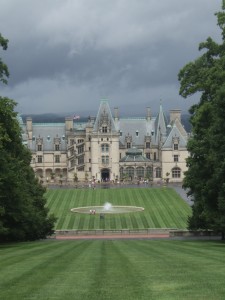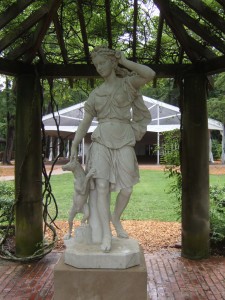Biological Control of HWA at Biltmore Estate
Here is the beetles-eye-view experienced by a colony of HWA predator beetles (Sasajiscymnus tsugae) that were released at Biltmore Estate in Asheville NC in May 2013. The location of this release was the hemlock forest above the statue of Diana, goddess of the hunt. So perhaps she is enjoying watching these little beetles, as they seek out and voraciously consume HWA in the surrounding hemlocks.
These predator beetle releases are a pilot project, initiated by Head Arborist Bill Hascher, to extend long-term protection against the hemlock woolly adelgid to Biltmore’s many large, century-old hemlocks. The objective of this pilot project is to achieve a smooth hemlock health transition from short-term chemical control of HWA using synthetic neonicotinoids to long-term biological control using Sasajiscymnus tsugae and other HWA predator beetles.
The large hemlocks at Biltmore estate date to Frederick Law Olmsted’s landscape design for the approach to George W. Vanderbilt’s spectacular mansion that was completed in 1895. And like the construction of the Biltmore mansion itself, which drew on the specialized skills of countless immigrant workers, the hemlocks will benefit from the work of these specialized predator beetles from Japan, working to reduce HWA populations to levels that will not threaten hemlock health.
George W. Vanderbilt was a pioneer in forest management and forest health innovations. So congratulations to his descendants, who still own and manage the Biltmore property, for providing environmental leadership toward managing HWA on private properties.



Leave a Reply